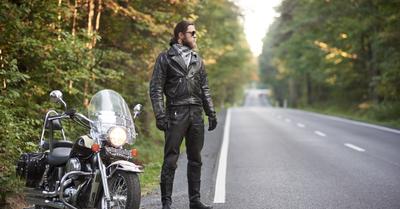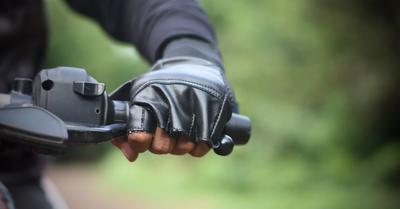What Is A Combustible Engine Backfire?
When a Harley or any motorcycle backfires, it’s more than a loud, explosive noise. It’s an anomaly. The combustible engine is designed to burn fuel and air in a combustion chamber by drawing air through the intake valve while fuel injectors spray gas into the same chamber. When the piston compresses the air and fuel during the upstroke, the spark plug ignites the mixture creating a small explosion that sends the piston back down. The next time the piston travels upward other valves open to release the gases. This perfectly timed explosion and release of gases take place thousands of times a minute turning the crankshaft which turns the wheel.
Normally, the gasses escape through the exhaust manifold and are cleaned by the catalytic converter just before it exits through the tailpipe. But sometimes, for various reasons, fuel escapes with the gases and enters the incredibly hot exhaust system. At this point, the fuel can combust inside the exhaust instead of inside the combustion chamber. This explosion is fed through the natural trumpet shape of the exhaust pipes creating an echo chamber that amplifies the sound into a heart-stopping bang that can reverberate through your soul if you find yourself behind a Harley-Davidson during this process.
What Causes An Engine To Backfire?
Dirty Carburator: Older bikes experience a poor air-to-fuel ratio when the carburetor needs cleaning. If you don’t have fuel injectors, you’ll need to clean the carburetor often.
Failing Fuel Pump: A lean fuel mixture (not enough gas) will create a popping sound that mimics a backfire as the gas builds up in the combustion chamber and fires during the release of gases stroke. This can also be true when fuel filters are dirty and get blocked.
Incompatible Upgrades: Everyone knows Harley owners love to tinker with aftermarket upgrades, but when they aren’t tuned properly, the timing will be thrown off, and the fuel/air ratio will create backfiring. Shorter tailpipes may look cool and sleek, but it prevents proper airflow, lacks the baffling, and creates more opportunity for a backfire.
Exhaust Leakage: When a leak occurs in your muffler or exhaust system, the air reduces the needed backpressure, which allows more gas to reach the tailpipe and ignite.
Gaskets must be in good working order to prevent leaks, and you should always check carefully for cracks in the header pipes.
Bad Timing: My first bike, a 1973 Honda CBR450, had a points/condenser timing system that gave me fits. Every time the engine spins, two metal discs open, sending a signal to the ignition coil to spark the spark plug. This has to be timed perfectly and fails often, creating a backfire. Electronic ignitions are more dependable, but the timing chain can still move forward or backward slightly, causing a valve to be mistimed.
Valve Spring Failure: This is an easy failure and an easy fix. Valves often get bent or the spring goes, and it’s necessary to replace them. Otherwise, fuel will escape early and create a buildup in the exhaust, which will explode into a backfire.
What Danger Does an Engine Backfire Pose?
Overheated Engine and Exhaust: The exhaust system in your motorcycle is not meant for the heat produced when fuel builds up outside the combustion chamber. The ignited fuel burns the muffler and tailpipes creating a blue oxidizing layer and more heat in both the tailpipe and the engine.
Fuel Wasted: Every time gas escapes the combustion chamber without igniting, you lose horsepower and acceleration. The gas is then burnt in the exhaust which does not propel the bike forward. You’re losing efficiency and wasting gas.
Potential Fire: It’s rare, but with some larger buildups of fuel in the exhaust system, you will actually see fire coming out of the tailpipe. This buildup can create enough fire to catch the bike on fire.
Bending Valves and Blowing Gaskets: Explosions outside of the combustion chamber will create enough kinetic energy to melt or blow out gaskets and bend valves so they no longer properly create the needed pressure in the chamber.
What Can You Do To Prevent Backfiring?
Confirm the correct grade of fuel. Using the wrong grade that doesn’t ignite at the correct temperature can create a backfire. Using clean gas or buying a fuel-injection cleaner will help prevent dirt and debris from getting into the fuel line.
Clean your carburetor. A quick and easy way to prevent backfiring, as well as increase fuel efficiency, is making sure the carburetor on older motorcycles is cleaned regularly.
Change your spark plugs. An intermittent spark from your spark plugs will create a buildup of fuel and eventually a loud backfire. The simple step of replacing the plugs will often solve the backfire issue.
Contact your trusted motorcycle mechanic. Get an evaluation of why your motorcycle is backfiring. Often, a novice bike owner that takes matters into his own hands will exacerbate the problem. Leaving it to a professional will save you money in the long run and more quickly find the backfiring issue.
Why Do Harleys Backfire More Than Others?
According to many H-D forums, some bikers really like a loud Harley. Backfiring is a bonus and welcome. Aftermarket mufflers, tailpipes, and exhaust systems are made for a raucous and deafening result. It’s not scientific, but if that’s the case and more Harley owners are buying bikes for a booming blast of an engine backfiring, then its reputation is well-deserved.
However, most of the Harley owners I know, including this author, is not intending for an annoying or obnoxious engine sound when firing up, and a backfire is not welcomed but instead is the sign of future trouble that needs an immediate remedy.















